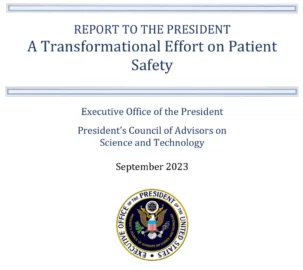One of the great sources of frustration for everyone working within the field of patient safety is that many of the solutions we need to prevent harm are already available, they are just not being used. But a dedicated field known as implementation science has emerged to try and improve the uptake of innovative new practices.
“The problems and solutions, they’re so well known that we have actionable evidence-based practices,” Francisco Valero-Cuevas, Professor of Biomedical Engineering at the University of Southern California, explained in a talk at the 10th Annual World Patient Safety, Science & Technology Summit last month. “They can be used and implemented today, anywhere on Earth, no development necessary.”
The shameful reality is that it can take up to 17 years between the publication of protocols for preventing harm, and their actual implementation in the clinic. This is a shocking delay which is impacting thousands of lives and costing millions of dollars in healthcare resources and legal settlements.
Even then, just 14 percent of all medical innovations end up being incorporated into routine care. Investigations have shown that even in high-income nations like the US who should be leading the way in this regard, patients are receiving just half of the recommended care for their condition.
The human cost of this failure to implement evidence-based practices into our hospitals was shown by a study published earlier this year in the New England Journal of Medicine. Assessing 11 Massachusetts hospitals, it found that nearly one in four patients admitted experienced an adverse event. Almost a quarter of these incidents were preventable, and a third caused serious harm, numbers which are clearly unacceptable.
Preventing Medication Errors through Implementation Science
The Patient Safety Movement Foundation has published actionable evidence-based practices which serve as blueprints to prevent adverse events ranging from medication errors to central line-associated bloodstream infections.
Michel Wensing, Professor of Health Services Research and Implementation Science at Heidelberg University Hospital, explains how implementation science is also trying to increase the involvement of well-trained nonphysician clinicians, such as pharmacists or advanced practice nurses, in patient care. While this challenges some traditional ideals on the role of physicians, research has found this to be effective in improving care.
“Studies have found positive impacts, but nevertheless this is limited in some settings,” says Wensing.
But implementation science is not only about ushering in the new. It also attempts to accelerate the de-implementation of interventions which offer no benefit and are actively causing harm. One example of this is stopping the long-term use of analgesics, which can cause damage to the internal organs and heart problems. “De-implementation is a big topic, driven by the agenda of healthcare payers,” says Wensing.
Practical Ways to Accelerate Implementation Science
But why does it take so long for any of this to actually happen? Sadly, the factors which block new innovations from being implemented are often related to resistance to change within the hospital environment, as well as resource constraints and divergent interests, with many healthcare institutions not seeing patient safety as a priority.
Roman Kislov, professor of health policy and management at Manchester Metropolitan University, cites the example of the surgical safety checklist, an innovation which has been demonstrated to reduce mortality and postoperative complications.
Making this standard practice within a healthcare setting would appear to be an obvious move, but in reality, it has to be carefully managed to ensure successful adoption.
Kislov explains that it is important for hospital leaders to engage directly with staff, rather than simply issuing a hospital-wide mandate which could lead to frustration and disinterest among stressed and overstretched employees.
“Introducing new guidelines, protocols and procedures inevitably breaks existing routines, generates extra workload, and causes change fatigue,” he says. “Getting the surgical staff’s buy-in requires co-ordinated efforts to explain why and how the checklist is to be used.”
Kislov believes that we need focus more on finding the most practical ways of incorporating an innovation into the busy routines of hospitals. He says that there is no one-size fits all approach, and a strategy which proves effective for implementing one innovation will not necessarily work for another. To settle on the best approach, he suggests that collaboration with patient safety advocates, patient groups, and their families is extremely important.
“Despite the rhetoric of improving patient care, the co-design and co-production of implementation studies with patients remains relatively rare, with much more attention being paid to collaboration with clinicians and healthcare managers,” he says.
In conclusion, we must prioritize ways of accelerating the science of best practices to reduce harm and save money. Our healthcare systems must be agile and welcome change as new practices emerge, but this will only happen through effective leadership. It requires hospital managers to communicate with their doctors and nursing staff to explain the importance of ushering in new protocols, and how this can benefit them and save them time in the long run. Patients and their families should be involved in the implementation of new solutions, as ultimately it is their lives and health which is at stake.





